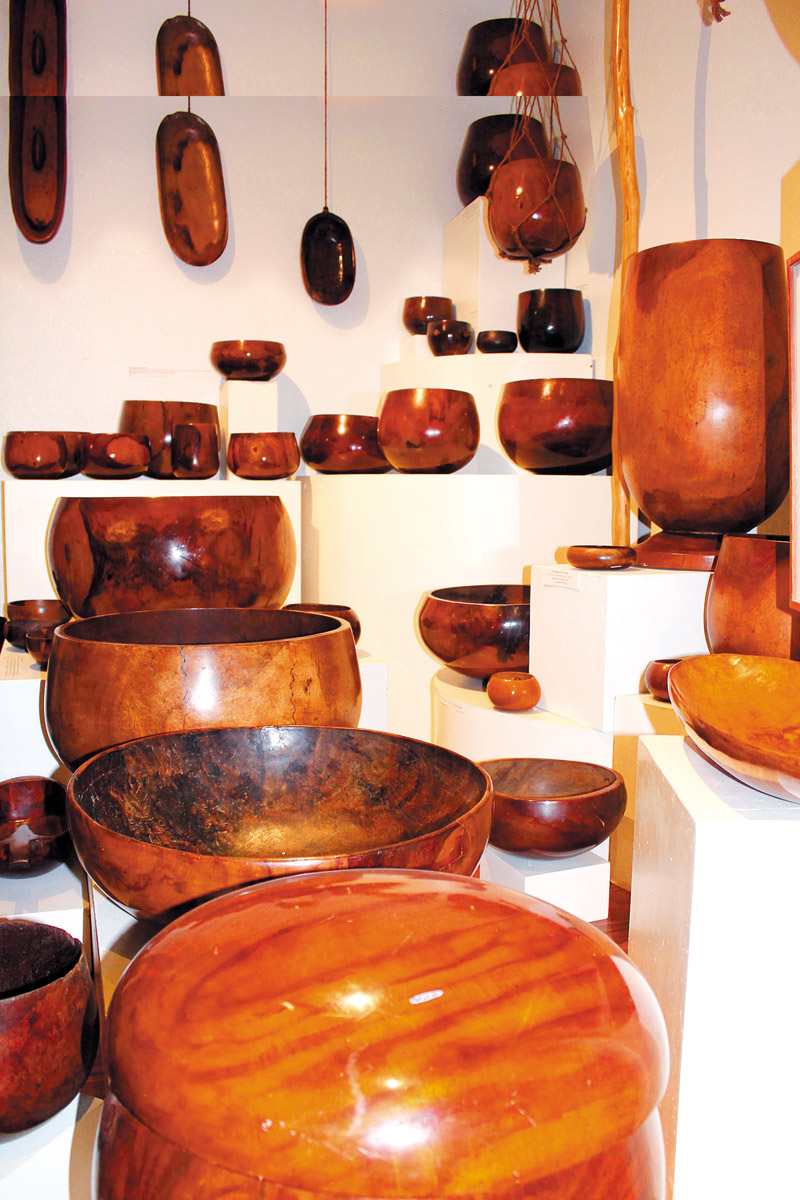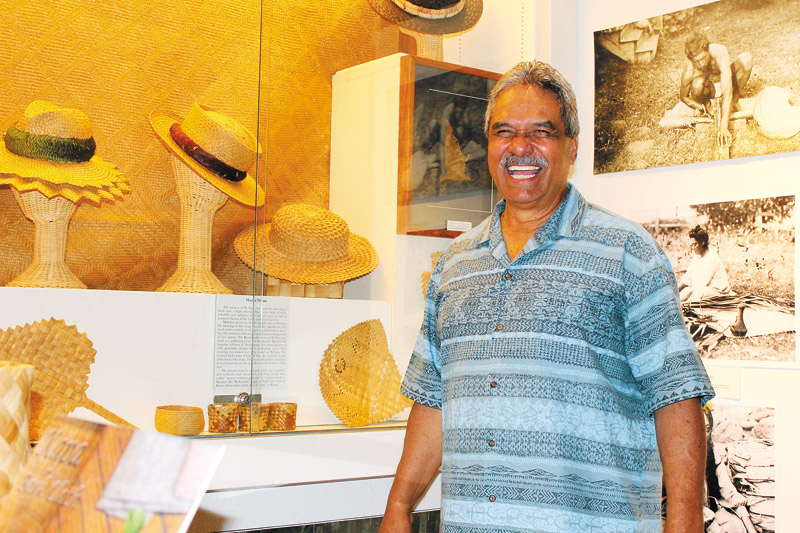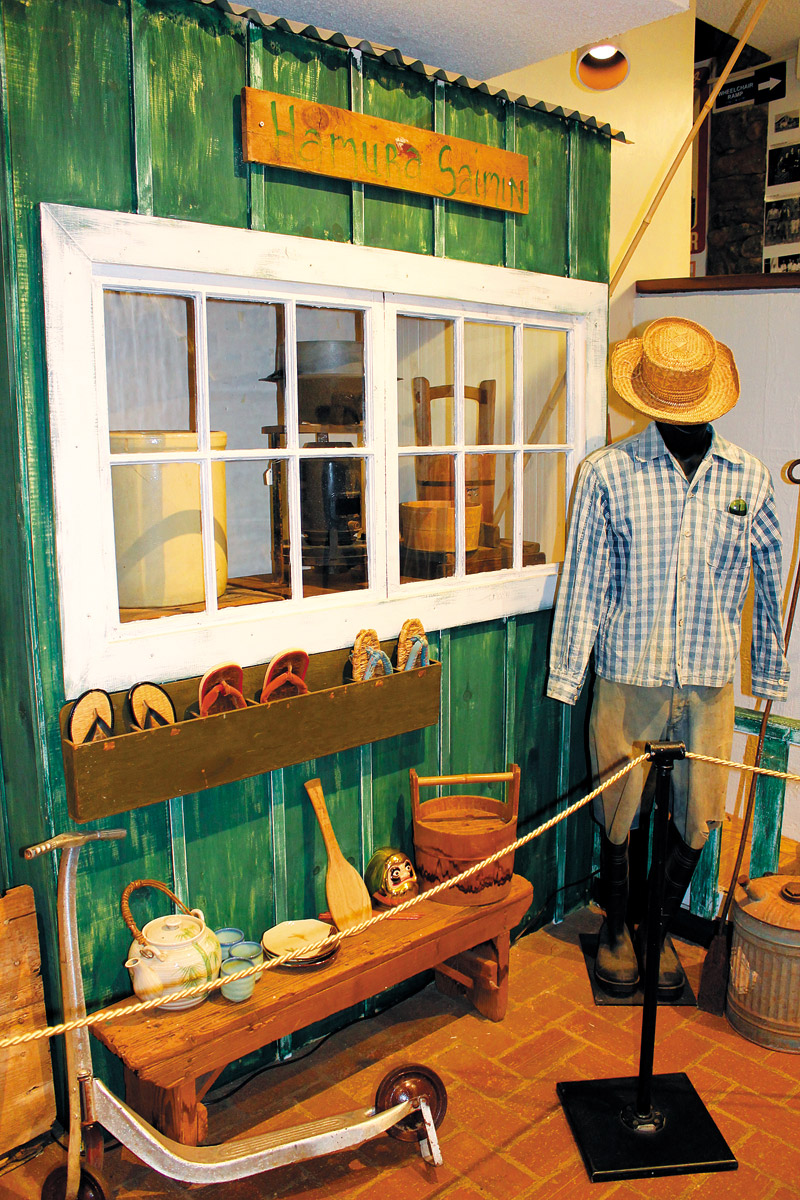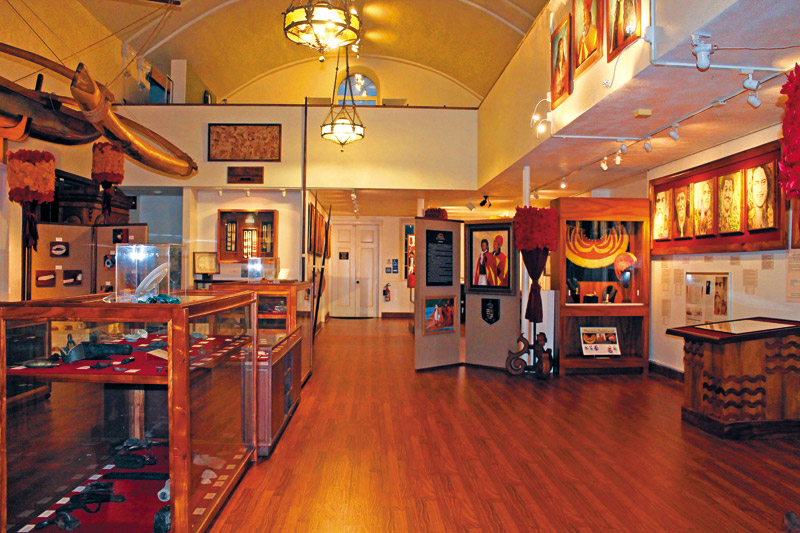Keeper Of The Culture
Chucky Boy Chock is clearly in his element when he’s surrounded by ancient Hawaiian artifacts, such as poi pounders made of chiseled rocks and wooden bowls meticulously carved from koa. He actually can’t stop grinning or acknowledging how proud he is of Kauai Museum, the official safeguard of these treasures, where he currently is executive director. But, really, what he’s most honored about is sharing the history of the Hawaiian culture, especially the story of Kauai and Niihau’s last reigning king, Kaumuali‘i.
“That is so important; that is our jewel,” he says.
In fact, he lights up and becomes even more animated as he walks around the recently renovated and upgraded museum telling the story of King Kaumuali‘i. He uses paintings, created by artist Evelyn Ritter, to help, each depicting an era of the ali‘i’s life. The extent of these carefully coordinated displays makes it nearly impossible to leave without gaining some kind of appreciation for the trials and tribulations of Kauai history.

The large collection of umeke (wooden bowls) at Kauai Museum even has the envy of entities as prominent as Bishop Museum
Sure, Bishop Museum might be what Chuck calls the “big papa” of Polynesian repositories, but Kauai has its own charm.
“We have our stories,” he says.
One of the most prominent stories is about King Kaumuali‘i’s kidnapping in 1821 aboard a luxury yacht owned by King Kamehameha II (Liholiho), Ha‘aheo o Hawaii
(Pride of Hawaii). It’s on this very vessel that Kaumuali‘i eventually met his demise after acquiring measles during a trip to Europe. When the ship returned to Hawaii in 1824, it ran aground in Hanalei Bay.

Chucky Boy Chock is proud to share the history of his culture with the rest of the world at Kauai Museum
“It’s still there,” says Chock, who adds that on clear days, from a helicopter, you actually might see some of its outline about 100 yards from the Waioli River mouth.
When he shares this information with keiki at schools around the island, which museum employees do on a regular basis to teach them about Kauai’s history, they get excited.
“Now they all want to go look,” he says with a chuckle.
But they’re not likely to find anything. Excavators from the Smithsonian who extracted thousands of artifacts from the ship during the 1990s made sure to completely bury it.

Kauai Museum has a building predominantly dedicated to the many different cultures that have settled on Kauai throughout the decades
The artifacts, however, can be seen, and are now in Kauai Museum’s possession, some of which are proudly on display in cases carefully lined with red velvet.
Zenon Wong, Kauai Museum historian, recounts his yearlong journey, about two- and-a-half years ago, taking inventory of the thousands of artifacts that arrived from the Smithsonian in seven hefty crates. He logged many hours learning about each of the pieces, such as the porcelain bowls from the Ming Dynasty and lead musket balls — all of which, he says, are invaluable.
“It’s just fascinating, the history,” he says.
Many of these pieces now are available for the public to ogle, along with hundreds of other ancient Hawaiian artifacts on display at Kauai Museum, including an
umeke (wooden bowl) once owned by Queen Deborah Kapule, King Kaumuali‘i’s favorite wife.
“All the artifacts are man-made wonders that tell great, beautiful stories. But the most important thing is they are priceless symbols of our culture and our heritage,” says Chock, who is of Hawaiian descent.
The vast improvements made to the museum within the last year-and-a-half have even gained official nods from the likes of representatives from the Smithsonian, as well as Bishop Museum, who now consider it to be among their ranks — even if it’s only a fraction of the size. And its updates are far from complete.
“It’s never-ending,” says Chock.
Plans for the museum’s future include the continuation of tributes to Kauai’s immigrants, as well as expansions that will host traveling exhibits. All of these things Chock continues to be responsible for, even though he wouldn’t have predicted this new life-changing career 10 years ago.
“I never knew that would happen,” says the musician, who originally started helping out at the museum by sharing his melodies with guests during special events. “I did what I could with whatever I was asked to do,” he says. “But while I was doing that, I saw things I wanted to improve.”
The rest, as they say, is history.
Kauai Museum, originally Lihue Library, was founded by Juliet Rice Wichman and Dora Jane Isenberg Cole in 1960, is something Kauaians can be proud of, thanks to Chock.
“It’s time to go beyond and share our stories. People should hear these stories,” he says.
It’s no longer just a place visitors can embrace, but a place for kamaaina to learn more and celebrate the island’s rich history. Chock is confident his team has done a good job improving the facilities, particularly when descendants of Kaumuali‘i come to pay homage to their ancestor.
“They will stay here and they will just cry,” he says. “It’s for all Kauai and Niihau because he was our great king.”
Visit kauaimuseum.org for more information.
cocomidweek@gmail.com





